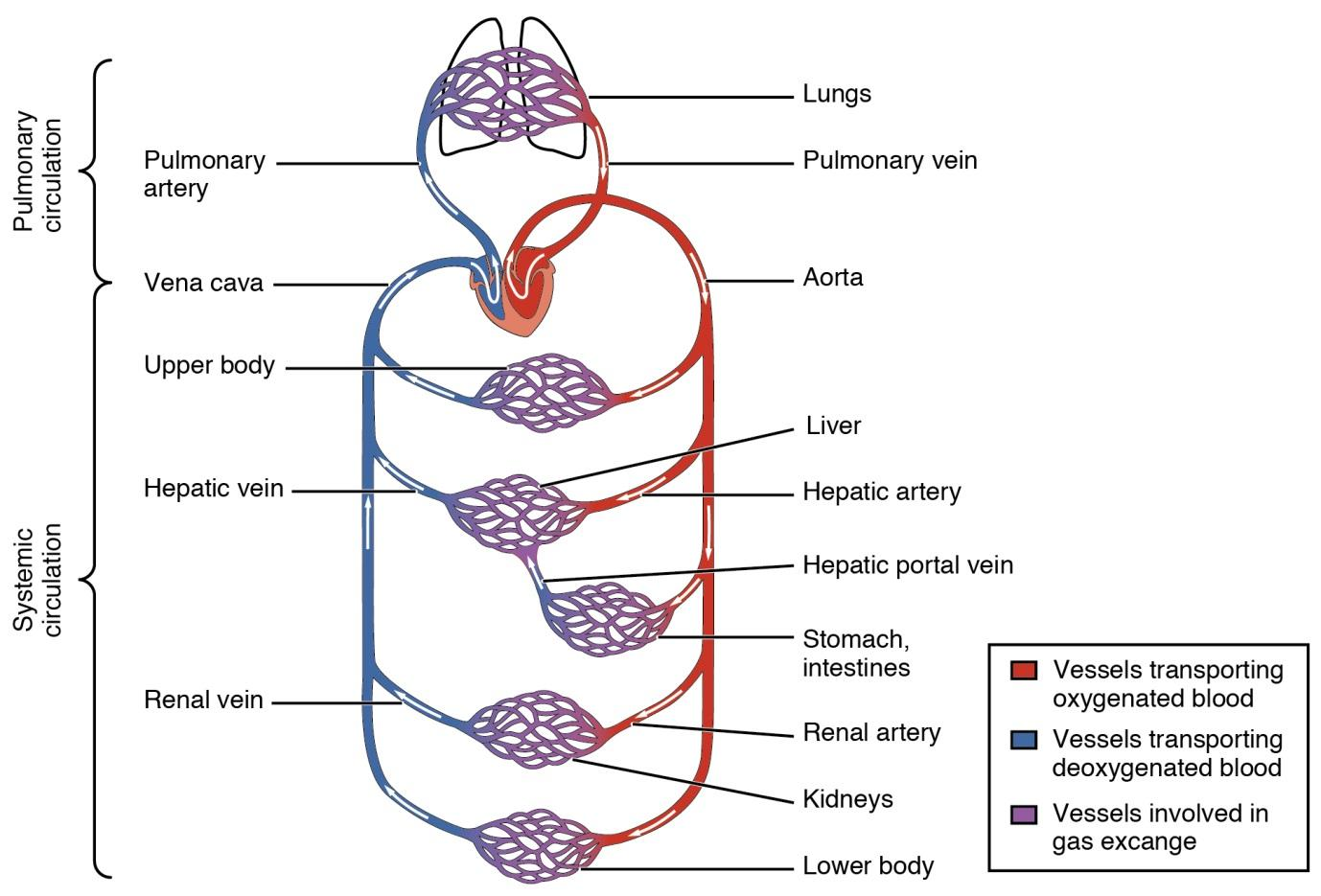
What is pulmonary circulation?
Answer
520.9k+ views
Hint: Pulmonary circulation is the flow of blood between the heart and the lungs. Deoxygenated blood goes to the lungs and oxygenated blood returns to the heart.
Complete answer: Pulmonary circulation is the blood circulation pathway in which deoxygenated blood is moved out of the heart and sent to the lungs and then after oxygenation, blood is returned back to the heart for further systemic circulation.
Pathway: From the right atrium, the deoxygenated blood is pumped out from the right atrium into the right ventricle as the tricuspid valve opens.
This blood is then carried away from the heart by pulmonary arteries to the lungs.
In the lungs, gaseous exchange occurs (as CO2 is released and O2 is picked up) and deoxygenated blood is purified and filled with oxygen i.e. oxygenated.
After that, the pulmonary veins bring back the oxygenated blood to the left atrium of the heart.
This blood then enters the left ventricle from where it can be circulated throughout the body parts.

Note: Oxygen is taken up by haemoglobin of RBC by cooperative binding. In the lungs, the pulmonary artery further divides into very fine and thin-walled capillaries. Pulmonary arteries are the only arteries which carry deoxygenated blood and pulmonary veins are the only veins that carry oxygenated blood.
Complete answer: Pulmonary circulation is the blood circulation pathway in which deoxygenated blood is moved out of the heart and sent to the lungs and then after oxygenation, blood is returned back to the heart for further systemic circulation.
Pathway: From the right atrium, the deoxygenated blood is pumped out from the right atrium into the right ventricle as the tricuspid valve opens.
This blood is then carried away from the heart by pulmonary arteries to the lungs.
In the lungs, gaseous exchange occurs (as CO2 is released and O2 is picked up) and deoxygenated blood is purified and filled with oxygen i.e. oxygenated.
After that, the pulmonary veins bring back the oxygenated blood to the left atrium of the heart.
This blood then enters the left ventricle from where it can be circulated throughout the body parts.

Note: Oxygen is taken up by haemoglobin of RBC by cooperative binding. In the lungs, the pulmonary artery further divides into very fine and thin-walled capillaries. Pulmonary arteries are the only arteries which carry deoxygenated blood and pulmonary veins are the only veins that carry oxygenated blood.
Recently Updated Pages
Two men on either side of the cliff 90m height observe class 10 maths CBSE

Cutting of the Chinese melon means A The business and class 10 social science CBSE

Show an aquatic food chain using the following organisms class 10 biology CBSE

How is gypsum formed class 10 chemistry CBSE

If the line 3x + 4y 24 0 intersects the xaxis at t-class-10-maths-CBSE

Sugar present in DNA is A Heptose B Hexone C Tetrose class 10 biology CBSE

Trending doubts
Why is there a time difference of about 5 hours between class 10 social science CBSE

What is the median of the first 10 natural numbers class 10 maths CBSE

Indias first jute mill was established in 1854 in A class 10 social science CBSE

Indias first jute mill was established in 1854 in A class 10 social science CBSE

Write a letter to the principal requesting him to grant class 10 english CBSE

The Equation xxx + 2 is Satisfied when x is Equal to Class 10 Maths




